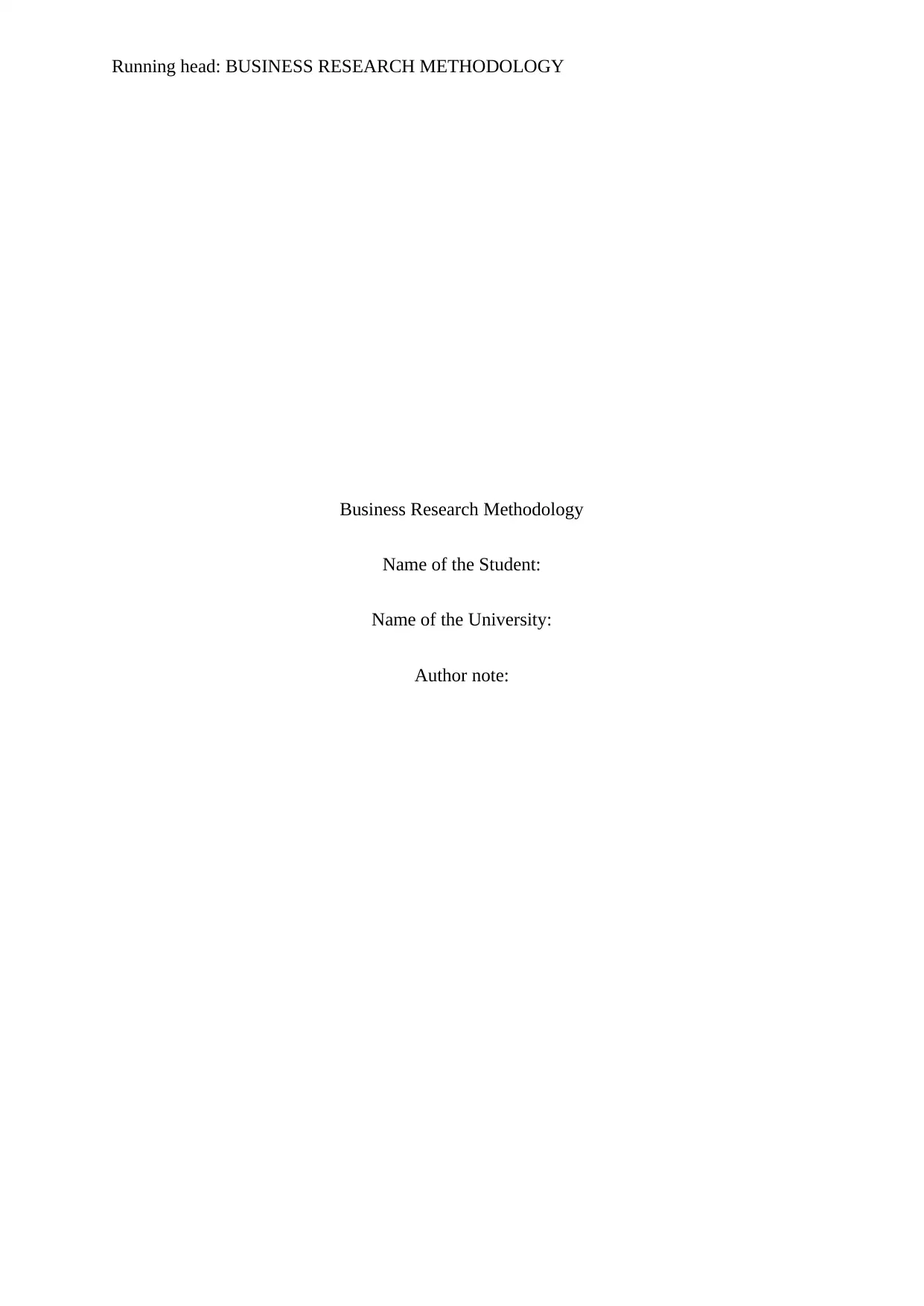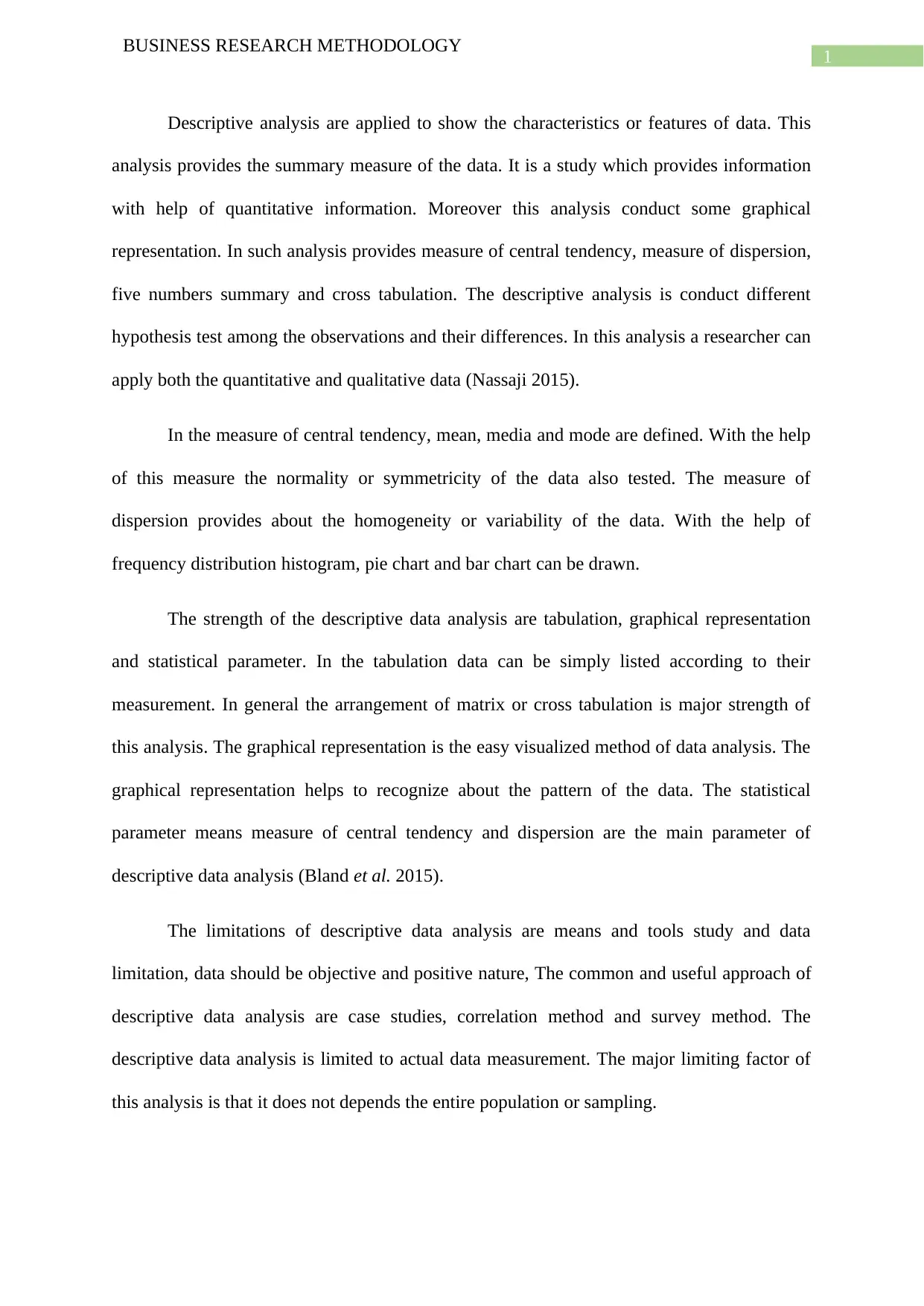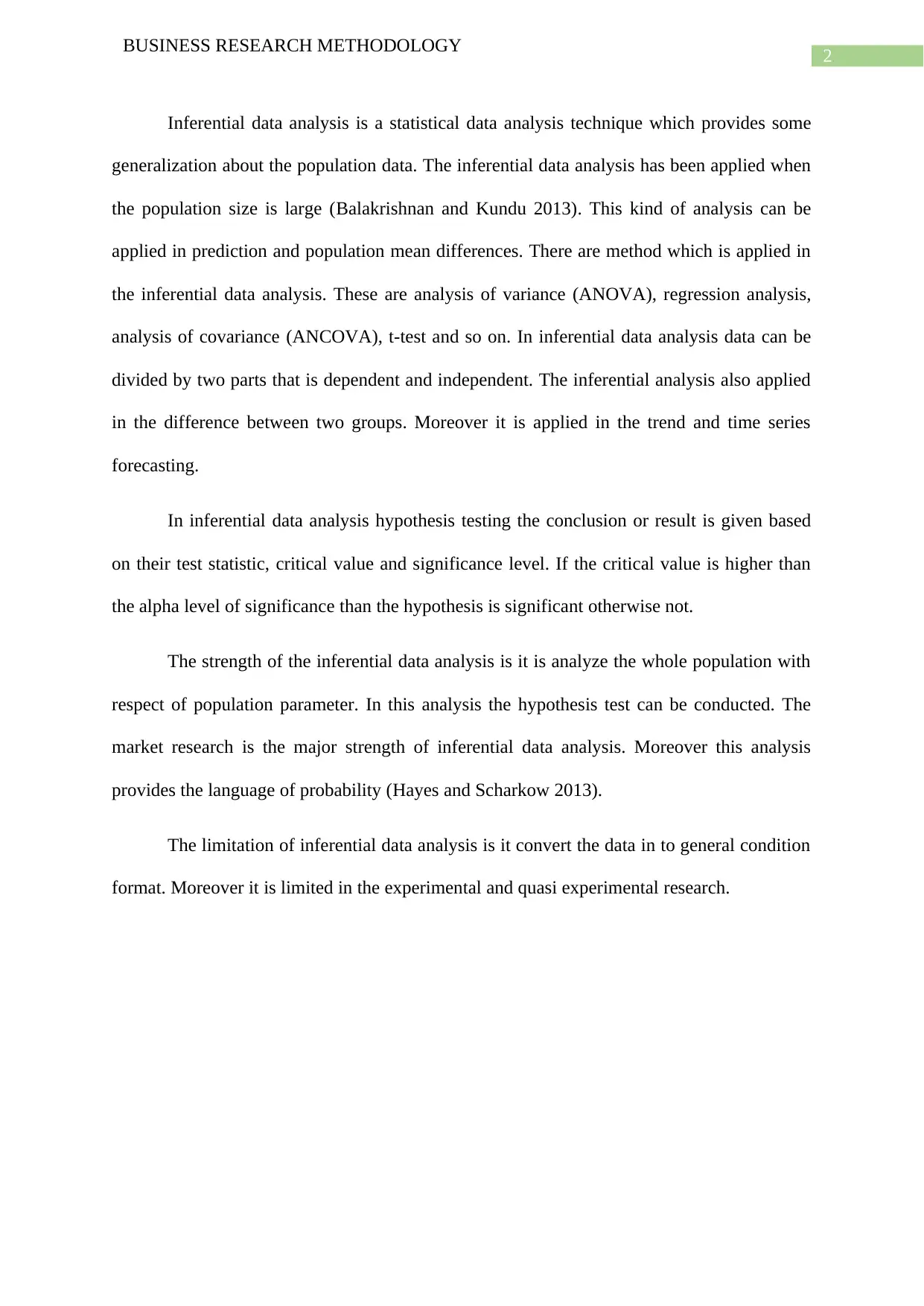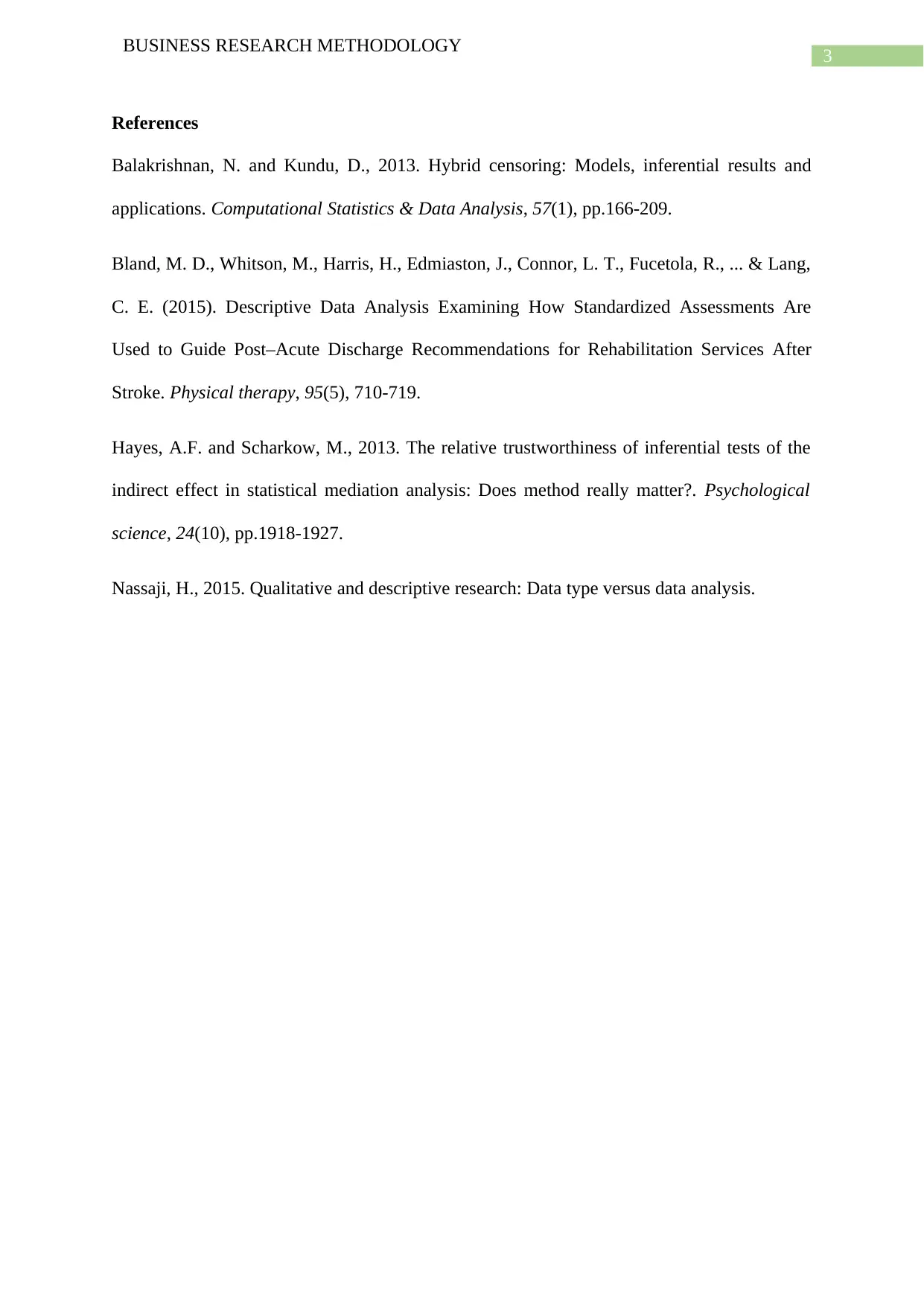Business Research Methodology Report: Descriptive vs Inferential
VerifiedAdded on 2022/08/29
|4
|775
|38
Report
AI Summary
This report provides a comprehensive overview of business research methodology, specifically focusing on descriptive and inferential data analysis techniques. The report begins by defining descriptive analysis, highlighting its use in summarizing data characteristics through measures of central tendency, dispersion, and graphical representations like histograms and charts. It discusses the strengths of descriptive analysis, such as tabulation and graphical visualization, while also acknowledging its limitations in terms of data objectivity and scope. The report then transitions to inferential data analysis, explaining its role in generalizing population data, conducting hypothesis testing, and making predictions. It details methods like ANOVA, regression, and t-tests, emphasizing the importance of dependent and independent variables. The strengths of inferential analysis, including its capacity for market research and probability-based conclusions, are contrasted with its limitations in experimental and quasi-experimental research. The report concludes by providing references to support the analysis.
1 out of 4









![[object Object]](/_next/static/media/star-bottom.7253800d.svg)